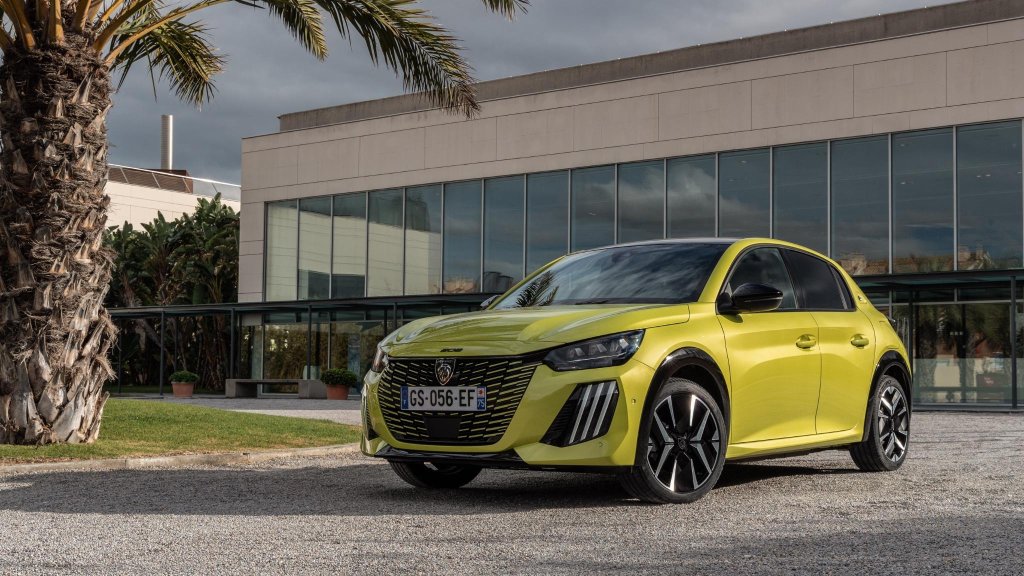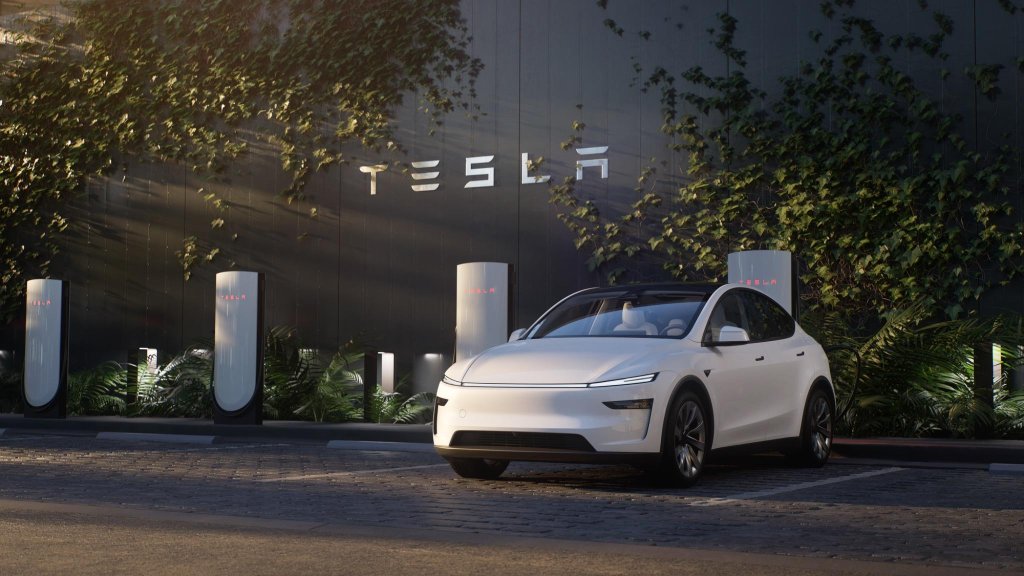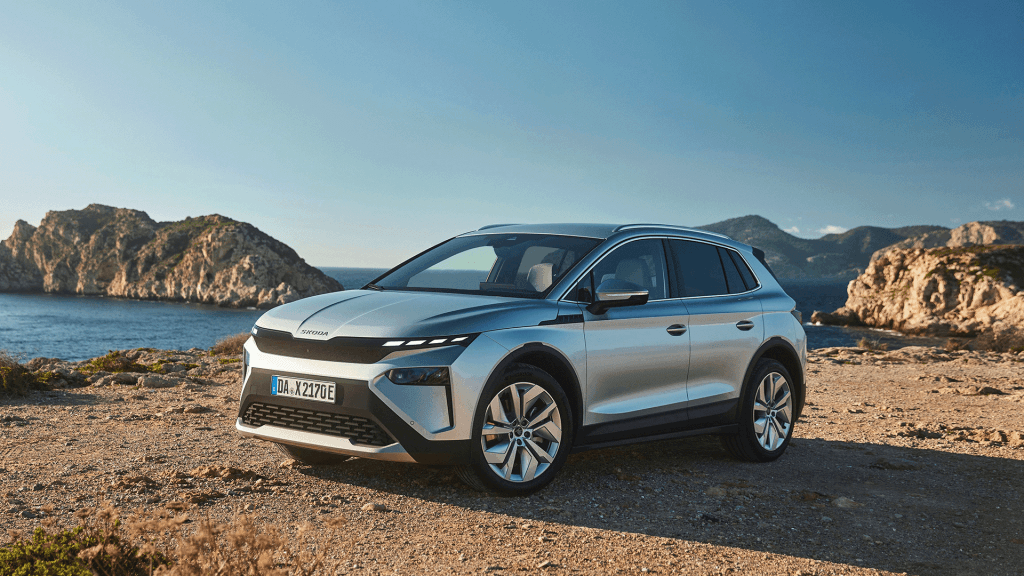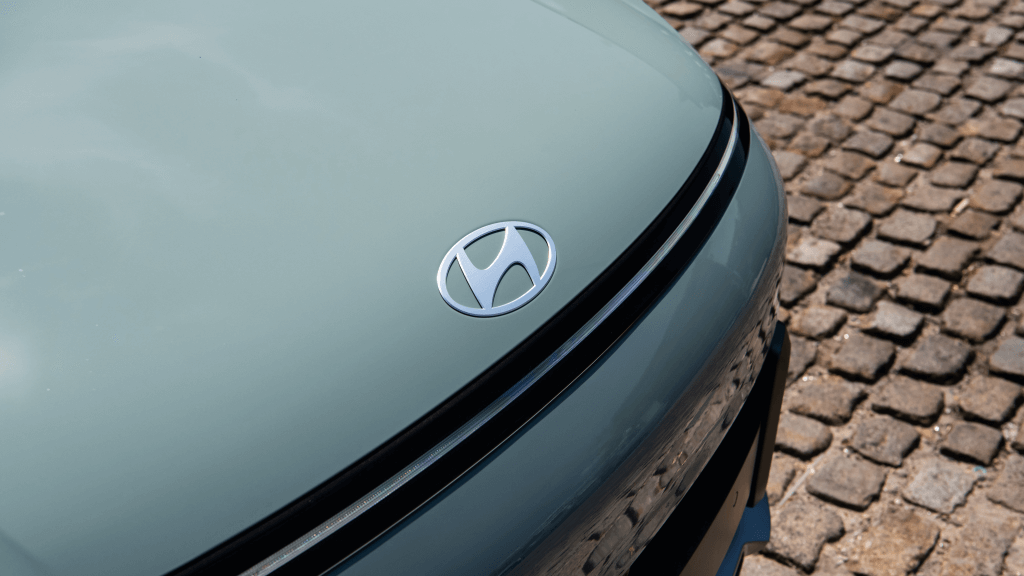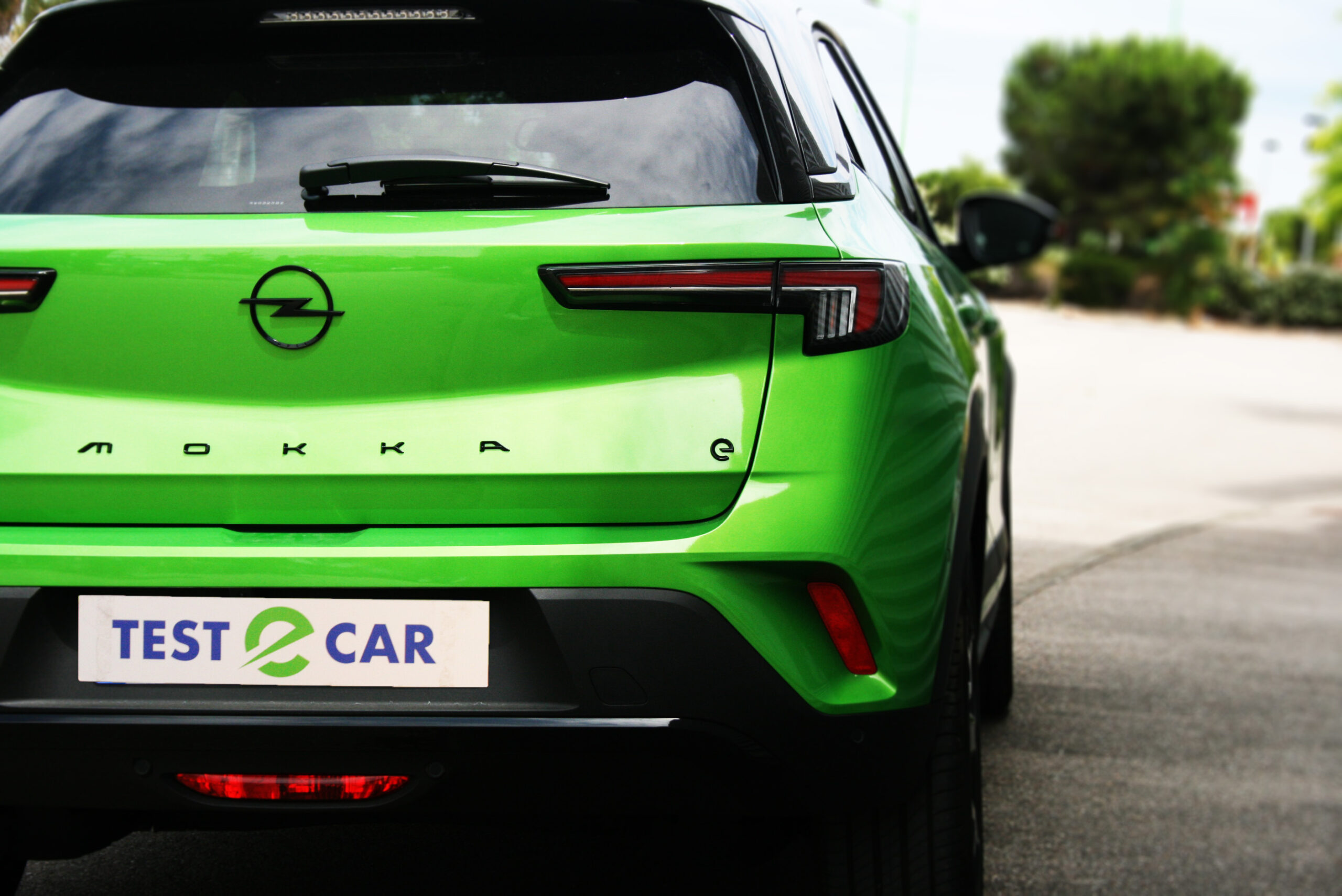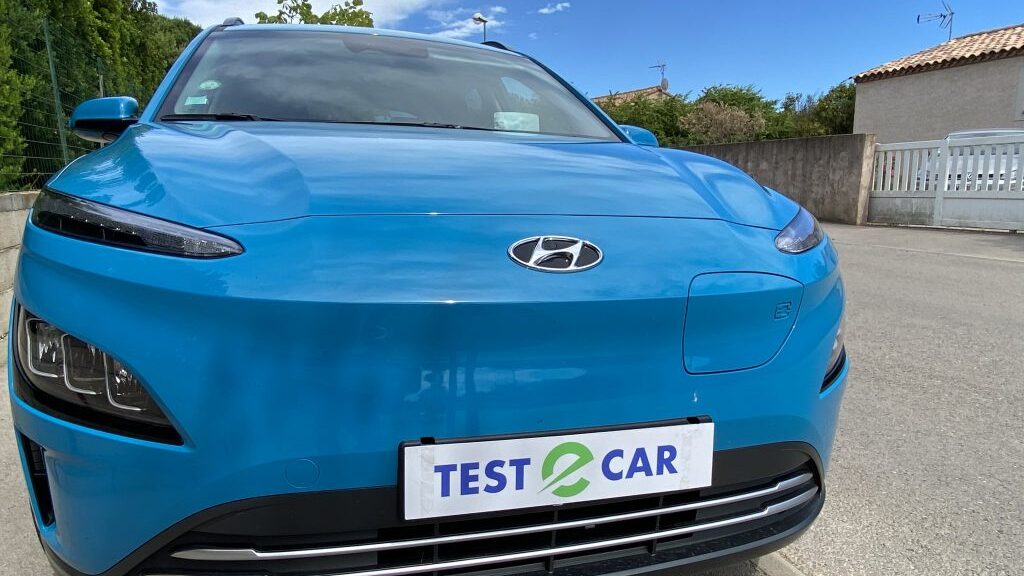
In 2017, in another professional life, we had the opportunity to discover, on the roads of the Marseilles creeks, the last SUV of Hyundai, the Kona. This first thermal version already augured the beginnings of a success. The arrival in 2018, of hybrid and electric engines came to bring new answers, in terms of electromobility. Let’s meet with the Hyundai Kona Electric.
One week without recharging the Hyundai Kona Electric
It’s in 2021, that the South Korean manufacturer delivers a “revamped” vision of the model. We were able to take the steering wheel for a long test drive of the Hyundai Kona Electric. The car keeps the DNA of the thermal version for the whole of its physiognomy. With its 4.2 meters long, 1.80 meters wide and 1.57 meters high, the car is classified as a compact SUV. A segment that has become extremely competitive and where the smallest assets allow to differentiate oneself. At first glance, what changes is quite visual. We can rapidly notice that the aesthetics have evolved on the front end. The grille has disappeared, the hood giving the impression of plunging forward, in a very smooth way.
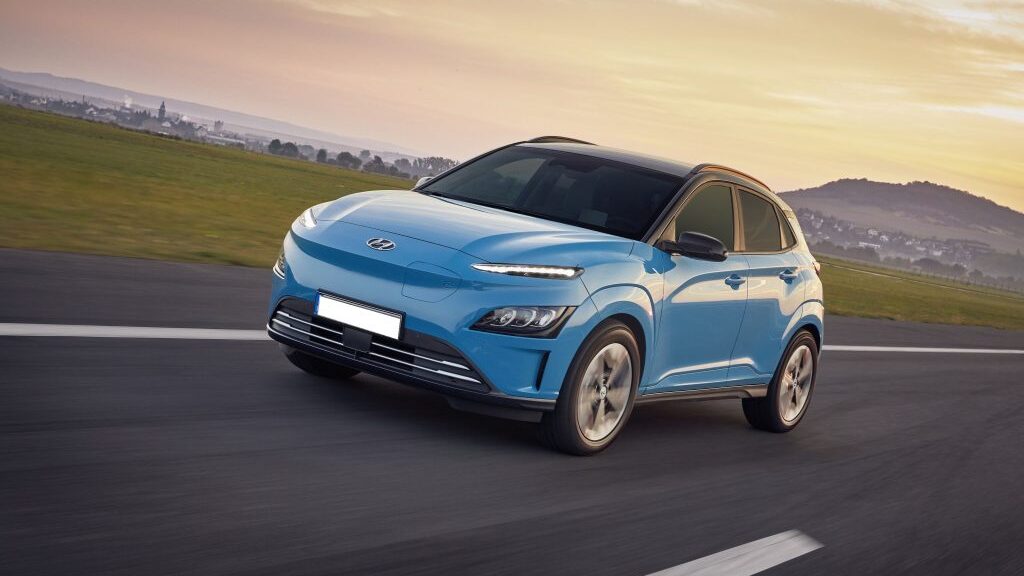
Other changes are also revealed in the headlights. Sharper headlights. This is where the South Korean company comes to shake up the car manufacturers. This SUV makes a tempting proposal to cover nearly 500 km, real, on the road and in suburban use. That’s enough for a week’s worth of personal or business travel, without recharging… Currently, a basic Tesla Model 3 offers a minimum of 448 km of autonomy, although the sales prices are different. Of course, the calculation can be smoothed by reasoning in “cost of use” but the difference is still there.
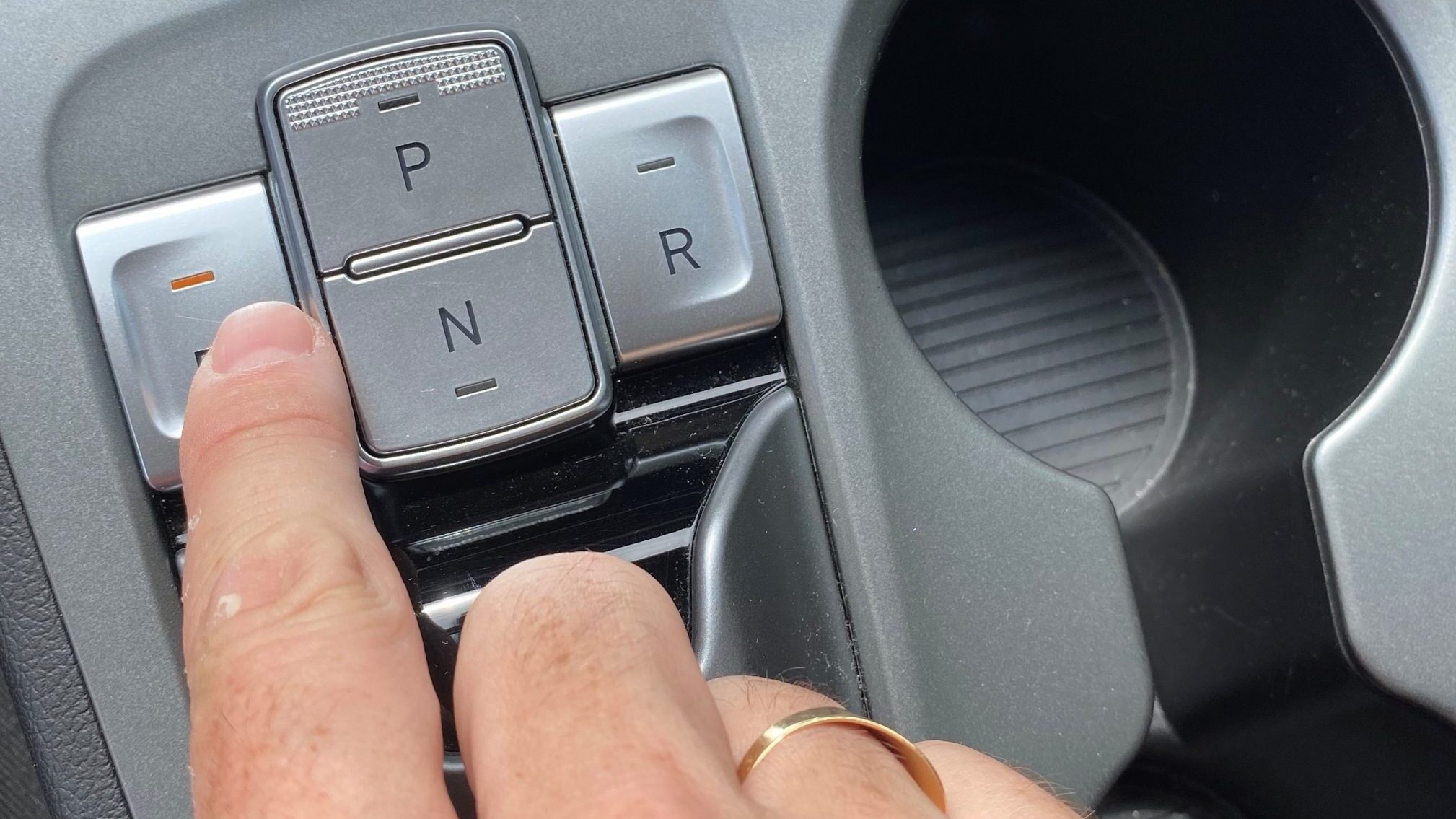
Driving in urban areas
So, we left for the city, one of the best places for this Hyundai Kona Electric. Heading towards the seaside, in the Hérault region, near Mèze and Balaruc-les-Bains, we were able to melt into the traffic and get a feel of the behavior of this urban SUV. The best way to drive, in this configuration, was to switch to Eco mode.
A mode, let’s say degraded, where the optimization of the consumption is privileged. First of all, you have to select the mode. A choice that is made by using the “drive mode”, positioned on the console between the seats. A negative point, in our opinion, because this selector is very far back on the console and forces you to take your eyes off the road in order to see where you are putting your finger. Not a very ergonomic system.
Management of the engine brake with paddles
The version we drove was equipped with a 64 kWh battery pack and a 150 kW engine, equivalent to 204 hp. The most powerful for this SUV. All this for a weight of 1,760 kg. The three driving modes offered – Eco, Normal, and Sport – allow the car to find its place, depending on the traffic.
You can choose these modes by simply pressing the D button for “drive”. Note that you will only have three other alternatives on this automatic gearbox: R for reverse; N for neutral; and P for applying the parking brake. The intensity of the engine brake is easily controlled thanks to the brake paddles located on both sides of the steering wheel.
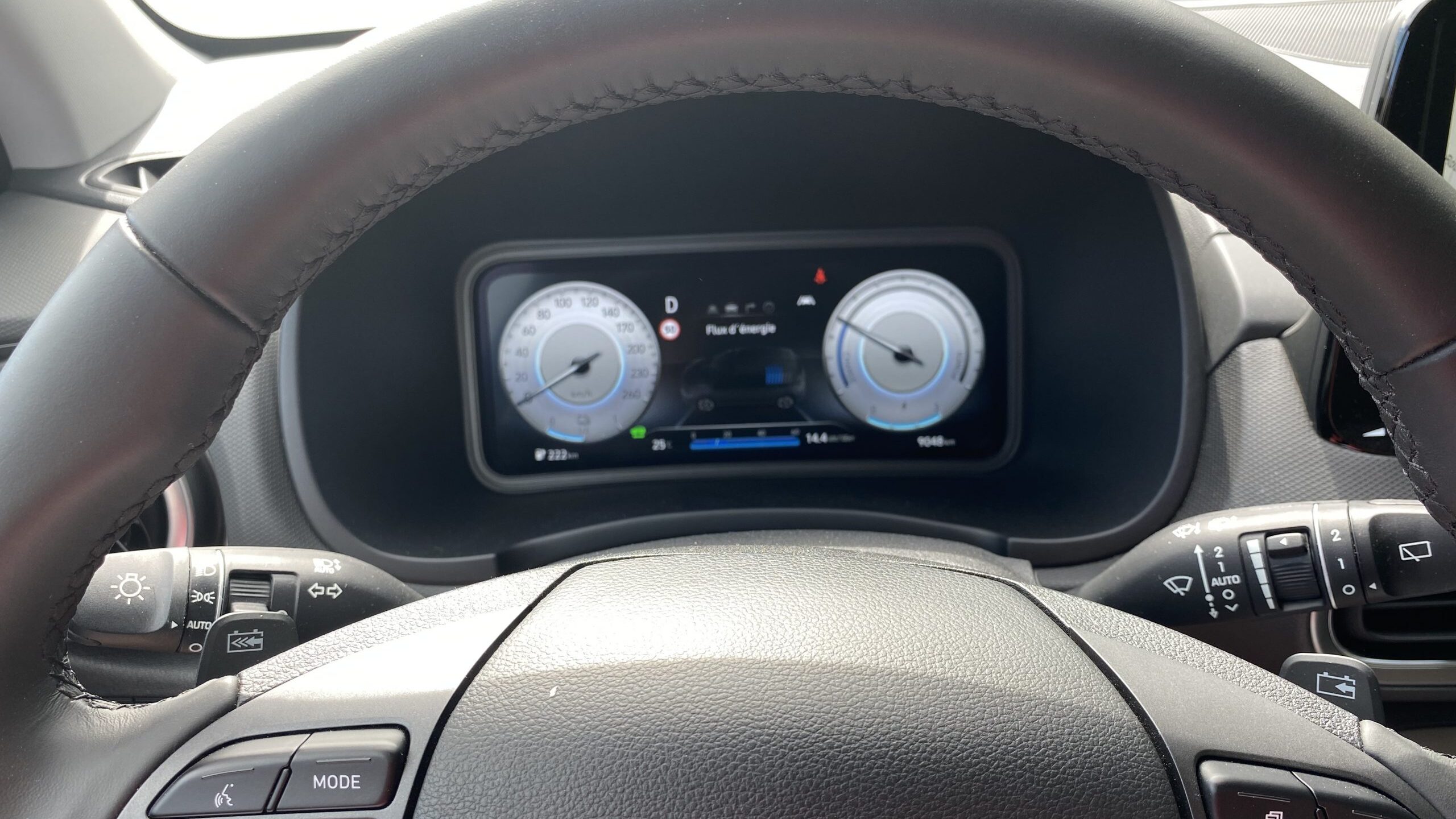
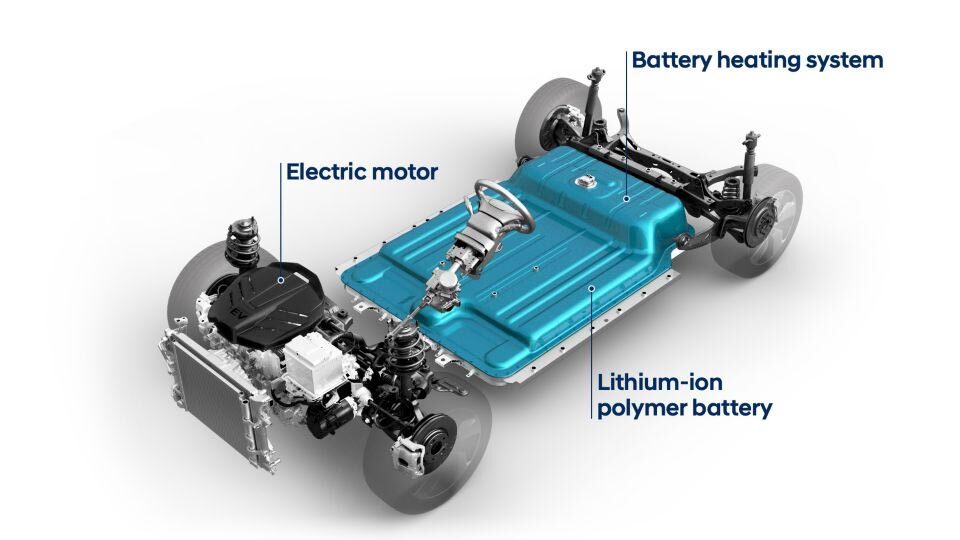
By successive pressure on a paddle, the engine brake increases its power, until it stops the car completely. The intensity is reduced when it is no longer useful. The goal is to use only the paddles without touching the brake pedal. This is another way of driving in the city that must be learned.

A vision of the electric car that we wanted to share. It is on the roads bordering the Thau Bassin that we gave the steering wheel of our Kona to Ode, our witness of the day. Owner of a non-rechargeable hybrid, from another brand, she shares her first impressions with us.
Hyundai Kona Electric: “Paddles are a good idea.”
“The first thing you feel is the comfortable sensation. The seat is nice. You’re slightly higher than the other cars. It’s great. However, it’s still not my style of vehicle”, says Ode.
“I appreciate the ability to choose your driving mode. The position of the control knob is poorly thought out ergonomically. It forces you to take your eyes off the road. The energy recovery paddle system is a good idea. On mountain roads, I appreciate it. But in the city, the engine brake can be too brutal”, she argues. “I like the look of the car. It doesn’t look like an electric car. Too bad that the designers didn’t go a little further in the electric spirit on the dashboard. On the road, we feel that it has power. It’s safe. It allows me to deepen my reflection on the upcoming acquisition of a 100% electric vehicle”, says our witness, Ode.
10.25″ digital panel
Note that the visualization of the expenditure and recovery of energy is possible by choosing this alternative on the digital dashboard. It’s also fun to play the game of “how much autonomy I recover”. And finally, it works… You gain battery regeneration while driving. Inside, there is a digital panel that displays data about the vehicle and driving. This panel is quite wide with a 10.25″ color touch screen.
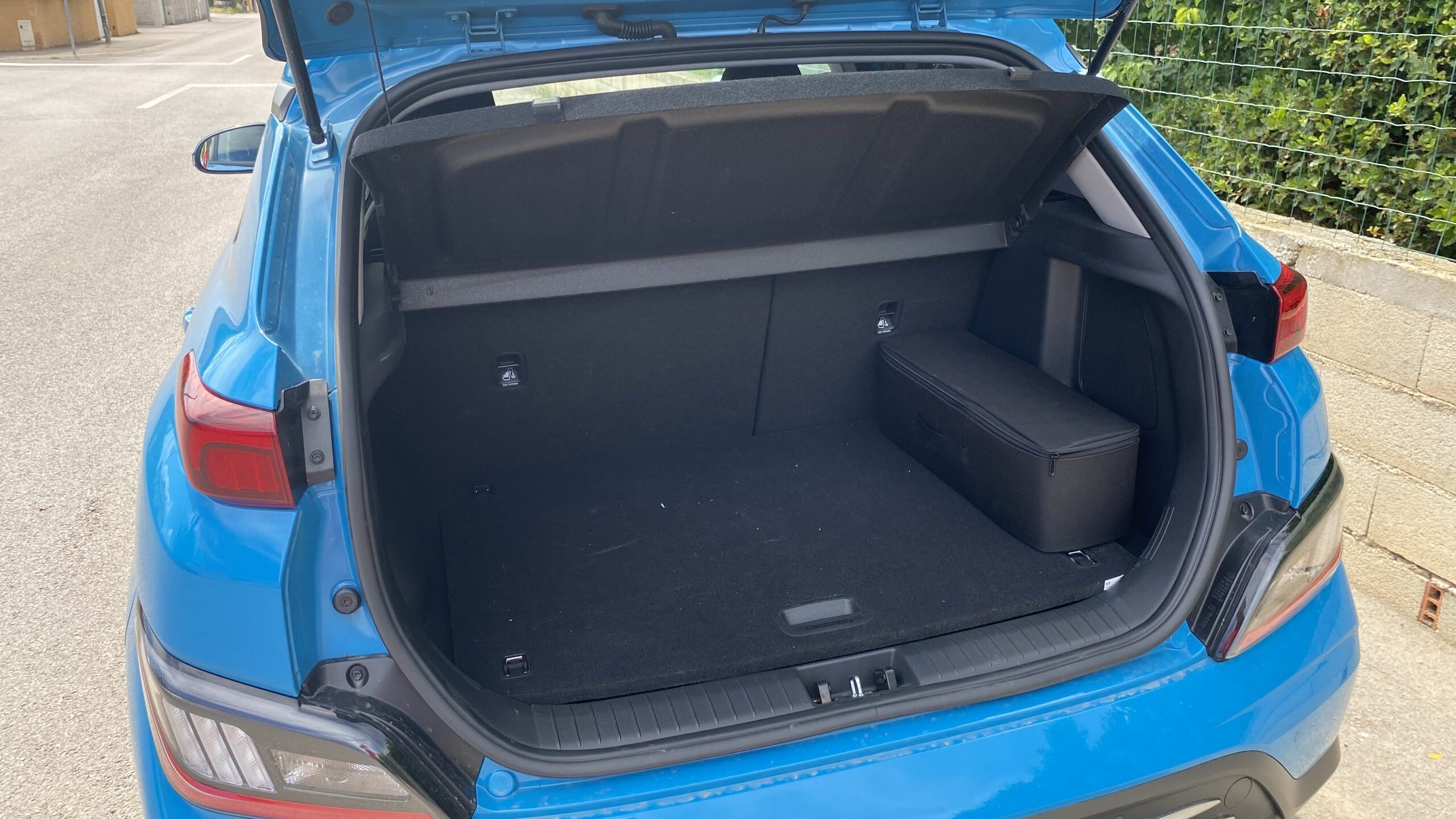
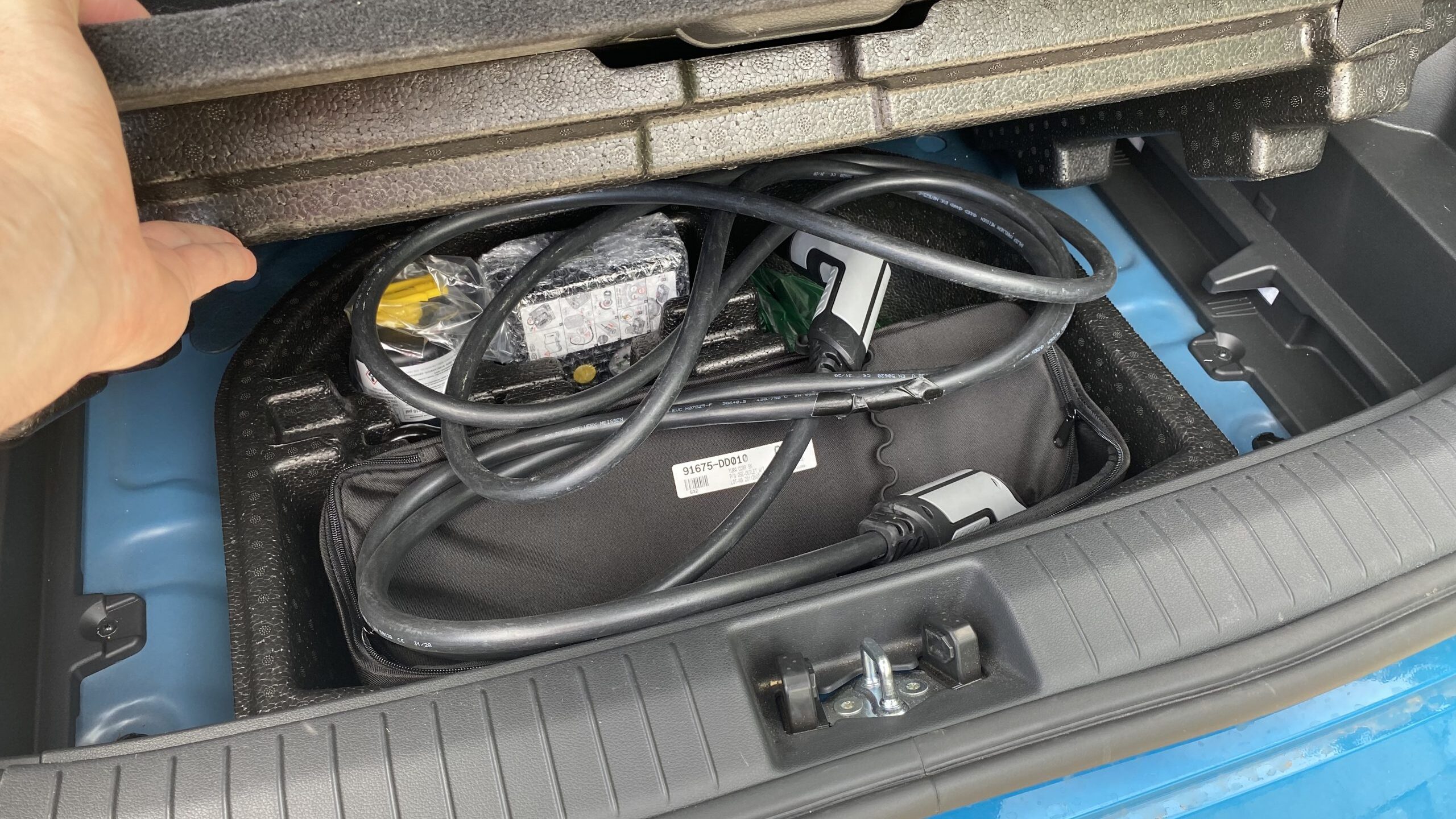
Sinking driving
As for life on board of the Hyundai Kona Electric, the atmosphere is identical to that of the combustion engine versions. With 40 mm added in length, this Kona offers good habitability. Five people can sit in it, with decent legroom in the back. Once we left the streets of our coastal cities, we took the car out to get a feel for its behavior. The suspension comfort is still a bit firm, even if Hyundai has worked hard on this aspect. However, the car absorbs well the curves and the roughness of the roads of the hérault hinterland. The 1,760 kg are felt, but nothing embarrassing. In driving, “flowing”, the pleasure of driving has what to contradict those who think that we follow in electric and that there is no feeling.
What about the highway?
With these qualities, we had to see how the South Korean car would behave on fast lanes and other highways. We headed south, towards Perpignan. Once we reached the ribbon of asphalt, the car’s electric characteristics encouraged us to drive. In Sport mode, to activate the 204 hp, the foot tends to be heavy on the right pedal. The response is immediate.
It pushes hard! You’ll have to temper your enthusiasm, because at 130 km/h on the highway, the battery’s autonomy melts away. Ideally, you should set the car at 110 km/h for a reasonable fuel consumption. As you can see, on the highway, this Kona will swallow up the kilometers, but “piano, piano”…
With this new 100% electric Kona, version 2021, Hyundai allows electric mobility with a range that starts to become very interesting for mixed use. Both for the city, as well as for longer trips. Almost 500km for a compact SUV can give food for thought to those who would like to have an electric car for all types of trips. Just keep in mind what you want to do with your electric Kona…
Pierre-Jean Côme
How to recharge the Hyundai Kona Electric?
For slow and fast charging, the Hyundai Kona electric is equipped with an on-board charger of 7.2 kW in its 39 kWh version. On the large battery version, the on-board charger switches to three-phase 11 kW (except for the entry-level Intuitive). For fast charging, the DC Combo protocol is used. Accepting up to 77 kW of power, the Kona can be recharged to 80% in less than an hour at a fast charging station.
Technical specifications
Length: 4.21 m
Width: 1.80 m
Height: 1.57 m
Wheelbase: 2.60 m
Ground clearance: 15.8 cm
Trunk volume: 332 liters
Tires: 215/55R 17
Empty weight: 1,760 kg
Engine: synchronous with permanent magnets
Power: 204 hp
Torque: 395 Nm
Transmission: front wheel drive
Useful battery capacity: 64 kWh
On-board charger power: 11 kW (AC) and 77 kW (DC)
Recharging time: 3 hours from 10 to 100% on a 2 kW domestic socket;
6 h 50 from 10 to 100 % on 11 kW terminal;
47 min from 10 to 80 % on 100 kW fast terminal
Claimed autonomy: 484 km (WLTP mixed)
Autonomy on the road: 477 km
0 to 100 km/h: 7.9 s
Maximum speed: 167 km/h
Combined WLTP consumption: 14.7 kWh/100 km
Bonus 2021: 6000€ from July, 1st.
Prices: between €39,900 and €46,600. Note that the Kona Electric 64 kWh is billed €4,800 more than the 39 kWh version, which is the financial effort required to take advantage of a wider range (+ 179 km).


